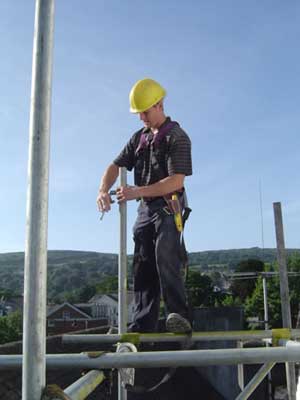Scaffolder
Tasks & duties

Scaffolders may do some or all of the following:
-
check the ground conditions, calculate scaffold loadings and decide what scaffolding platform to build
-
unload scaffolding from trucks
-
fit steel tubes and support braces together to form the framework to fit scaffold platforms
-
lay wooden boards (sole plates) on the ground to spread the weight of the scaffolding
-
fasten ladders and guard rails to the scaffolding
-
alter and extend the scaffolding if necessary
-
take down the scaffolding and load it onto the truck
-
check and maintain scaffolding equipment
-
liaise with clients and discuss their needs and requirements
Skills & knowledge
Scaffolders need to have:
-
knowledge of how to erect and dismantle scaffolding
-
knowledge of how to use and care for scaffolding equipment
-
knowledge of building regulations
-
knowledge of workplace and construction site safety regulations
-
the ability to identify potential hazards, such as overhead power lines
-
the ability to interpret building plans and diagrams
-
communication skills
-
organisational skills
Entry requirements
To become a scaffolder you need to be at least 16 years old and gain national certificates in basic scaffolding, suspended scaffolding, and advanced scaffolding, and a certificate in competence.
Secondary education
Three years of secondary education is recommended. Useful subjects include maths, technical drawing and English.
Tertiary education
National certificates in basic scaffolding, suspended scaffolding and advanced scaffolding are available at Tai Poutini Polytechnic.
Training on the job
Skills are gained on the job. National certificates in basic scaffolding, suspended scaffolding and advanced scaffolding, and a certificate in competence can be gained on the job, with the theoretical training completed at tertiary training providers. Scaffolders usually begin work on the ground as trainees and work under supervision until the certificate in competence is gained. Scaffolders are required to do first aid and health and safety training.
Useful experience
Useful experience includes building construction work and any jobs involving physical labour.
Related courses
Scaffolding and Rigging
For more information, please refer to Career Services.
Document Actions
